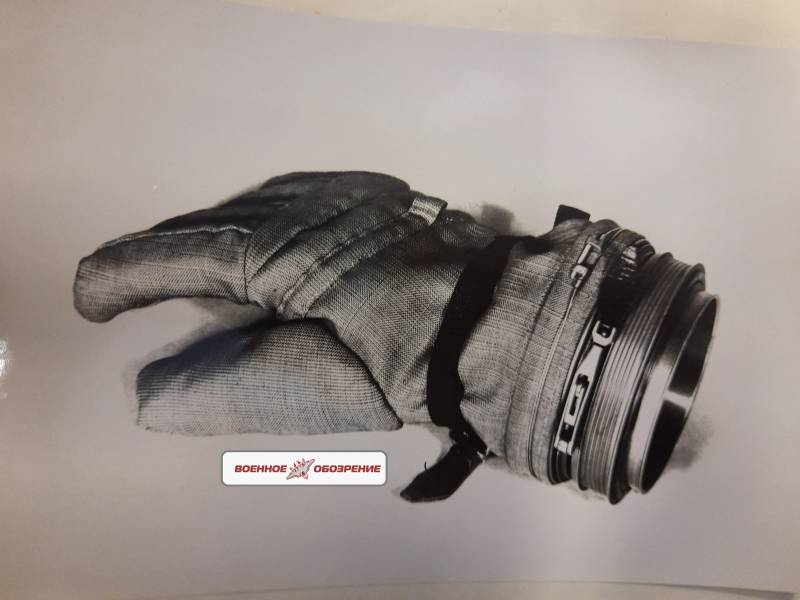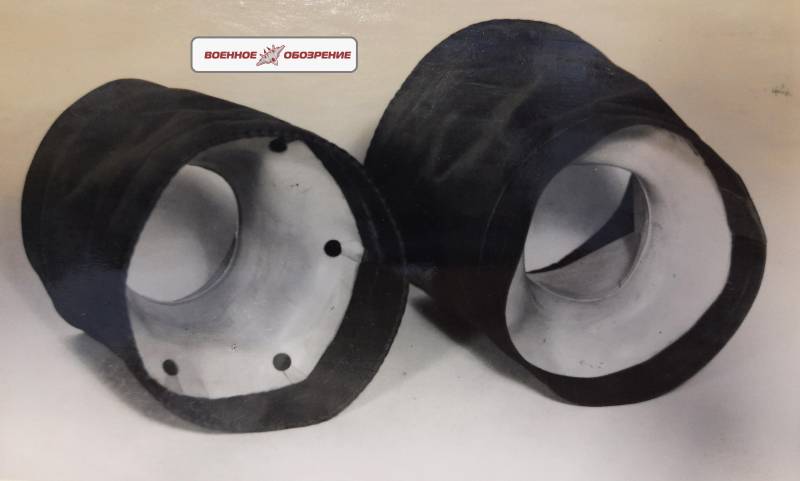Realization of the possibility of Gagarin's stay in vacuum without gloves
For many people, the fact of the fundamental possibility of finding a person in a spacesuit with bare hands in conditions close to vacuum will be a revelation, and some will exclaim:
But in the literature describing the SK-1 and SK-2 spacesuit, you can find an unremarkable phrase
(From the book "Space suits of Russia").
And we are not talking about sealing during splashdown, but in the case of depressurization of the KK cabin in conditions close to vacuum.
It turns out that "it can be."
But in order to understand why and under what conditions such a space flight regime was considered on the Vostok series spacecraft, it is worth referring to stories creation of spacesuits and physiological experiments carried out in Germany, the USA and the USSR at the dawn of high-altitude aviation and manned astronautics.
Spacesuits without hermetic gloves
The first domestic aviation suits (VSS series - VSS-04A, VSS-04M, VSS-05, VS-06, VSS-07 (VKS-1) (1953-1954)), developed by plant No. 918 (now NPP "Zvezda"), constructively did not provide for the presence of sealed gloves. And the sealing of the SC in the area of the sleeves was provided by inflatable cuffs and compensating gloves, which was permissible for flights at altitudes up to 20-30 km.
The first aviation spacesuit with full-fledged sealed gloves in 1957 was the SI-3M.
However, a few years later, when designing a spacesuit for the first manned space flight, they again returned to the use of inflatable cuffs to seal the spacesuit. That at first glance looks strange and absurd. But despite this, it made common sense.
Reasons for using sealing cuffs on the sleeves of the SK-1 and SK-2 spacesuits
The first manned orbital flights under the Vostok programs did not provide for the removal of the spacesuit during the entire flight lasting up to several days. However, after the launch into orbit, the crew members were allowed to raise the helmet glazing flap and remove the sealed gloves.
In case of depressurization of the aircraft cabin, in the Soviet spacesuits "SK-1" for Yu.A. Gagarin and "SK-2" for V.N. Tereshkova created an overpressure of the order of 0,25 kgf / cm². When the pressure in the aircraft cabin drops to 430 mm Hg. Art. (equivalent to an altitude of 4,5 km)
At the same time, voltage was applied to the pyromechanism for closing the helmet, and it was automatically closed. "
In such a situation, the cosmonaut could simply not have time to put on gloves, therefore, the emergency (spare) sealing of the first space suits (SK-1; SK-2) in the area of the hands was performed by inflatable cuffs, a description of which is given in the literature rather sparingly.
They fit snugly around the astronaut's wrist. But the hands remained exposed and exposed to low atmospheric pressure, close to vacuum conditions.
Influence of low atmospheric pressure, close to vacuum conditions, on the hands that are without hermetic gloves.
The risk of such a situation was extremely small. But with the beginning of the era of high-altitude and space flights, it was not excluded. And they considered this option in all seriousness. Scientists in Germany (during the Second World War), and then the USSR and the USA, were faced with the task of determining the effect of a rarefied atmosphere on the human body as a whole, for which experiments were carried out in pressure chambers with the participation of experimental animals, and subsequently testers.
As for specifically bare hands, for this purpose, special experiments were carried out with the participation of people with ascents to heights of 25–35 km, where the barometric pressure is 5–15 mm Hg. Art.
As a result of these studies, the following became clear.
Firstly, due to the fact that the whole body is under an excess pressure of 0,25 kgf / cm², and the hands are in a rarefied atmosphere, the hands begin to swell and turn purple within a few minutes. Since the blood is squeezed into the zone of least pressure (laws of physics).
This disrupts the blood supply in the blood vessels of the hands. Bruises and petechiae appear. The person feels pain and numbness. And the mobility in the fingers and wrist joint is rapidly deteriorating.
Secondly, at altitudes over 25 km with an external pressure of about 16 mm Hg. Art. and below, after the first minute of exposure to a rarefied atmosphere, high-altitude emphysema occurs, which leads to even greater swelling of the hand after the first minute of being in a rarefied atmosphere.
There is a feeling of tension in the skin and "aches" in the hand (according to the recollections of the testers). After the descent, the hand turns out to be tense and cold to the touch, the capillaries of the nail bed overflow with blood. And then their contours became blurry. And the blood flow was indistinguishable, paresthesias occurred.
Despite this, within one and a half, maximum two minutes after "explosive decompression" or a rapid drop in pressure, the cosmonaut still had the opportunity to put on hermetic gloves on his own, although his fingers did not always fit into the gloved finger spaces. But even in this case, after a few days, the above symptoms disappear without a trace.
This is what one of the leading specialists in the field of high-altitude physiology and medical problems of the development of means of protection and rescue of flight personnel, doctor of medical sciences, professor, retired colonel of the medical service, a tester of aviation and space equipment, who has worked for more than 45 years in NIITs AKM and VE - Mikhail Vyacheslavovich Dvornikov, who participated in the seventies in ascents to a height of 30 km in a pressure chamber without gloves, who was interviewed:
They are still of great theoretical and practical importance for altitude physiology and aviation medicine.
I had to not only participate in the development and testing of the hypothesis, but also personally participate in the experiments.
At 25 km, the number of testers was more than 10, and five climbed to 30 km.
An interesting physiological fact was obtained in these studies. I specifically went to the experiment without compensating gloves. The absence of counterpressure on the hands showed that uncompensated excess pressure in the tissues of the hands is quite tolerable.
The hands were swollen, I did not feel any discomfort, there were no dysfunctions in the fingers.
At about the fifth minute of stay at an altitude of 30 km, signs of local vapor-gas emphysema appeared.
The skin is swollen, creaking when pressed on the surface of the hand. There was no pain.
As we descended, all phenomena disappeared. There were no residual phenomena on earth.
From a physiological point of view, I can explain this phenomenon as follows.
The lack of backpressure on the hand led to the deposition of blood and fluids in this area, and skin turgor partially served as a means of compensating for excess pressure in the tissues of the hand.
The compensation was incomplete, the pressure in the subcutaneous tissue reached an equivalent height of 19–20 km, maybe more.
The temperature of the liquid in this area could also be below 37 degrees, which led to vapor-gas emphysema, that is, interstitial boiling of liquid at a temperature under reduced pressure. "
There was a separate paragraph in the instructions for the cosmonauts, which indicated that in the event of a cabin depressurization at altitudes up to 30 km and above, in the absence of sealed spacesuit gloves on the cosmonaut's hands, he had to wear gloves within the first two minutes after the spacecraft cabin was depressurized.
Currently, the above problem has lost its relevance due to the high reliability of the spacecraft tightness and the mandatory use of a sealed rescue spacesuit at the stages of spacecraft launching and landing.
A similar attempt was made to use cuffs on the Orlan-D spacesuit.
However, the result of this idea is extremely controversial: the available literature does not indicate that the Orlan-D spacesuit was equipped with inflatable cuffs that provide protection for the astronaut in the event of damage to the spacesuit glove.
According to aviation doctors who were directly involved in the development of the SK, they persistently proposed the use of cuffs, but the proposal remained unrealized.
At the same time, one of the leading Orlan designers insists that cuffs were still present in Orlan-D.
It can be assumed that if the cuffs for the Orlan-M spacecraft really existed, they were used at the discretion of the cosmonaut.


Information